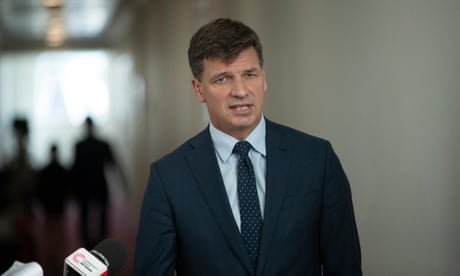Extract from The Guardian
Our major political parties – and the media – seem to have forgotten we’re heading for a cliff when it comes to temperature rises.

The week before the election was called the Intergovernmental Panel on Climate Change (IPCC) issued its third and final report on the IPCC’s review of climate science, detailing the likelihood of temperatures rising 1.5C (almost certainly) and 2C above pre-industrial levels. It was pretty shocking reading; and it has been completely ignored during the campaign.
On Tuesday it seemed finally climate change was going to appear in the election campaign. Alas, as Adam Morton noted, it was an appearance characterised by fear and numbers plucked from nowhere – too often seen in Australia these past 20 years.
Sigh.
After reviewing the press conferences and interviews of the two leaders up until Tuesday, I found no mention among about 160 questions asked of Scott Morrison that went close to the issue.
The best I could find was in the seat of Gilmore, when he was asked “What is your government doing to mediate potential bushfires?”

Morrison responded that it required “action to reduce carbon emissions” and that “Australia’s emissions have fallen by around 20 per cent”, which he said was “many times over what has been achieved in Canada and New Zealand and the United States.”
Such a line is so specious and oft repeated that you would think everyone has a quick retort ready by now. But no.
Always remember Australia’s emissions cuts since 2005 only look good if you count the massive level of land clearing that occurred in 2005. If you look at actual emissions that exclude land use, Australia is not doing well at all:
Questioning Morrison on climate change really should be easy. After all, there is so much evidence to use.
As Nine’s Nick O’Malley reported on Tuesday, the latest Green Future Index, published by MIT, has Australia plunging down the world ranking from a mediocre 35th to 52nd in the world – wedged between Saudi Arabia and the Philippines.
Among the OECD we come second-last:
If the graph does not display click here
Even worse for Morrison, who trumpeted “technology not taxes” as the way to cut emissions, Australia is currently ranked second-last in the OECD in both categories of “innovation” and “policy”.
On a global level, Australia’s level of clean innovation comes in at 68th out of the 76 nations that were reviewed.
Clearly, when it comes to technology, the prime minister means someone else’s.
Of course the government’s path to net zero by 2050, released last year, so greatly relied on technology that it only bothered to chart a path to emissions 85% below 2005 levels – the remainder was left to the hopes and dreams of technology yet to be discovered:
If the graph does not display click here
For example, he was asked if he could “guarantee that people, workers, in towns like Cessnock and other resources towns around Australia, that none of them will lose their jobs as a result of those policies”.
Thankfully one (yes one!) journalist did ask the ALP leader about emissions, asking “The UN is saying we actually need at least 45 [per cent] to keep below 1.5C warming. The Climate Change Authority also says between 45 and 60. Why have you gone 43, why have not gone 45 or higher?”
It was a good question. Albanese replied “what we didn’t do was say, ‘OK, let’s pick a number and work back from there’. What we did is we went, ‘What is good policy? What makes a difference?’”
It is weird answer that suggests policy development is akin to suggesting that you shouldn’t worry about how far you are from the cliff, but that you should just put your foot on the brake in a steady manner and hope that is good enough.
As it is, the IPCC outlined the paths required to stay under a 2C or 1.5C temperature rise, and it suggests the ALP likely has a target within the range needed to keep within a 2C increase, but not a 1.5C rise:
If the graph does not display click here
The government’s target, however, is right on the edge of what might limit temperature rises to 2C but is nowhere near that needed to keep them below 1.5C.
And within all of this discussion we need to remember our carbon budget – the total amount Australia is able to emit from now to do its share to limit warming.
Under the current projections, both parties’ policies would see Australia breach its 1.5C carbon budget in 2028.
Under the Coalition’s policy, by 2030 it would have used up 78% of the 2C budget, while the ALP’s 2030 target would see 70% of the budget used:
If the graph does not display click here
That means we will need massive cuts after 2030 if we want to stay within our budget:
All of this deserves attention, rather than fear campaigns about costs or lost jobs.
Instead, perhaps journalists could note the IPCC’s finding that “cost reductions in key technologies, notably wind power, solar power and storage, have increased the economic attractiveness of low-emission energy sector transitions through 2030”.
And even more potent is the finding that “maintaining emission-intensive systems may, in some regions and sectors, be more expensive than transitioning to low emission systems”.
No comments:
Post a Comment